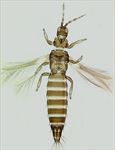
smithi female
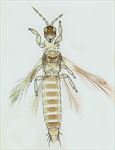
smithi male
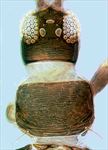
smithi head & pronotum

smithi male head & antenna

smithi pro, meso & metanota

smithi tergites VII-X
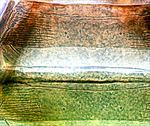
corbetti tergites III-IV
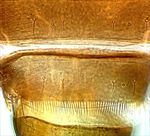
corbetti tergite VIII

corbetti fore wing
Generic diagnosis
Female macropterous or micropterous. Head slightly wider than long, weakly prolonged in front of eyes; often with a longitudinal row of small tubercles in front of first ocellus; maxillary palps 3-segmented; eyes without pigmented facets; ocellar setae I absent, setae III variable in length and position; with six pairs of postocular setae. Antennae 8-segmented, segment I without paired dorso-apical setae, III and IV with long apical neck and long forked sense-cones, III–V with some microtrichial rows on both surfaces. Pronotum wider than long, with one or two pairs of long posteroangular setae (or with no long setae); one or two pairs of posteromarginal setae. Mesonotum with median pair of setae far from posterior margin; campaniform sensilla absent. Metanotum reticulate or with transverse striae; median pair of setae at anterior margin; campaniform sensilla present. Fore wing first vein with long gap in setal row and three setae on distal half; second vein setal row almost continuous; clavus with five veinal and one discal setae; posteromarginal fringe cilia wavy. Prosternal ferna weakly connected medially; basantra membranous, without setae; prospinasternum broad and transverse. Mesosternum with sternopleural sutures reaching anterior margin; endofurca with spinula. Metasternal endofurca usually with spinula. Tarsi 2-segmented. Tergites without ctenidia or craspeda; II with three lateral marginal setae; VIII with posteromarginal comb long fine and complete; VIII often with an irregular group of microtrichia anterior to each spiracle; IX with two pairs of campanifom sensilla present, MD setae well developed; X without median split. Sternites without discal setae; III–VII with three pairs of posteromarginal setae, II with two pairs; VII with S1 and S2 setae in front of margin; laterotergites without discal setae.
Male similar to female; sternites III–VIII usually each with paired oval or circle pore plates, sometimes fusing medially.
Biological data
Dichromothrips species breed on a wide range of species in the Orchidaceae. Of the two recorded from China, corbetti is widespread on cultivated orchids, and smithi is widespread on the invasive plant Arundina graminifolia [Orchidaceae], but is also known as a pest of Vanilla crops in India.Distribution data
Species of this genus are widespread across the Palaeotropics between West Africa and Australia.
Nomenclatural data
Dichromothrips Priesner, 1932: 110. Type species Dichromothrips orchidis Priesner, 1932, by monotypy.
This is a Palaeotropical genus of 18 species (ThripsWiki, 2018), with only two recorded from China:
corbetti (Priesner, 1936: 209). (Anaphothrips)
smithi (Zimmermann, 1900: 10). (Physopus)
Relationship data
Thripidae sub-family Thripinae: this is a diverse group involving more than 230 genera. Dichromothrips shares many character states with Taeniothrips, but the pronotum lacks the prominent two pairs of posteroangular setae found in species of the latter genus, and the males usually have the sternal pore plates in pairs.
References
Mound LA (1976) Thysanoptera of the genus Dichromothrips on Old World Orchidaceae. Biological Journal of the Linnean Society 8: 245–265.
Okajima S (1999) On four Dichromothrips species (Thysanoptera, Thripidae) collected from one population of Arundina sp. (Orchidaceae) in Sabah, Borneo. Japanese Journal of Systematic Entomology 5: 145–152.
ThripsWiki (2020) ThripsWiki - providing information on the World's thrips. <http://thrips.info/wiki/Main_Page>